Accepted Scientific Name: Adromischus trigynus (Burch.) Poelln.
Repert. Spec. Nov. Regni Veg. 44: 61 1938
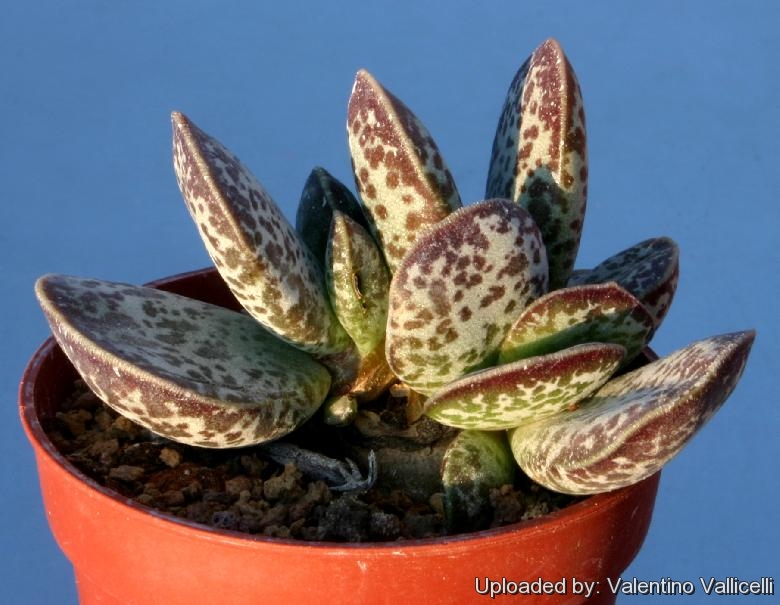
Adromischus rupicola
It is a small clumping succulent and relatively slow growing .
Older plants develop a massive caudex or large swollen area near the ground.
Origin and Habitat: South Africa mountains south of Little Karoo (Mpumalanga, Worcester east to Uniondale)
It is found widespread on rocky ridges from the dry, nominally summer-rainfall interior areas.
Synonyms:
See all synonyms of Adromischus trigynus
back
Accepted name in llifle Database:Adromischus trigynus (Burch.) Poelln.Repert. Spec. Nov. Regni Veg. 44: 61 1938Synonymy: 4
back
Common Names include:
ENGLISH: Calico Hearts Plant, Calico Hearts
AFRIKAANS (Afrikaans): Bontplakkie
Description: Adromischus rupicolaSN|143]]SN|143]] is a succulent herbaceous perennial rosette of few flat leaves, up to 10 cm across. It is a compact and relatively slow growing plant.
Stems: Stout very short, prostrate, with sparse branching. Older plants develop a massive caudex or large swollen area near the ground.
Roots: It has a large tuberous rootstock.
Leaves: Broad, almost round, orbicular or obovate 6 cm long by 4 cm wide, which mimic fat kidney shaped pillows, they are gray green richly blotched dark chocolate to brown and along the horny margins, the edge there is a silvery line.
Flowers: Flowers sessile, pale yellow green with pinkish or red tips.
Fruits: Fruit a dry many seeded follicle.
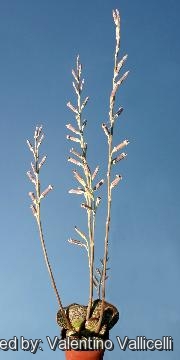 Adromischus rupicola Photo by: Valentino Vallicelli
Adromischus rupicola Photo by: Valentino Vallicelli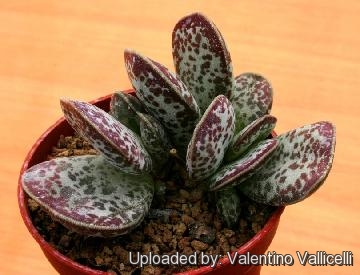 Adromischus rupicola Photo by: Valentino Vallicelli
Adromischus rupicola Photo by: Valentino Vallicelli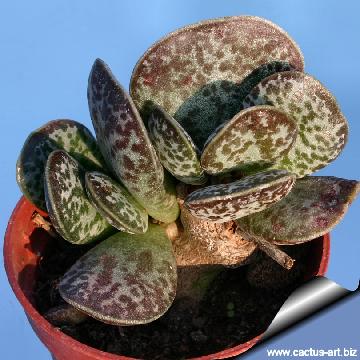 Adromischus rupicola Photo by: Cactus Art
Adromischus rupicola Photo by: Cactus Art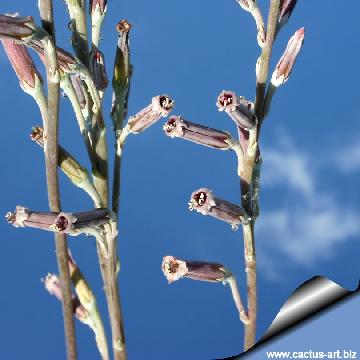 Adromischus rupicola Photo by: Cactus Art
Adromischus rupicola Photo by: Cactus Art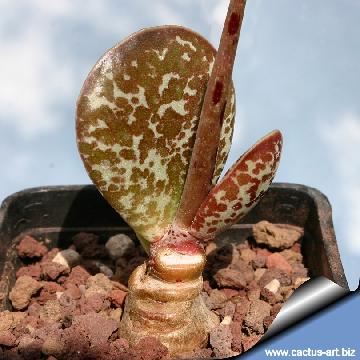 Adromischus rupicola Photo by: Cactus Art
Adromischus rupicola Photo by: Cactus Art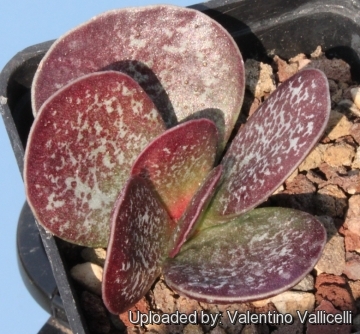 Adromischus rupicola Photo by: Valentino Vallicelli
Adromischus rupicola Photo by: Valentino VallicelliCultivation and Propagation: Adromischus rupicolaSN|143]]SN|143]] is a fairly easy succulent to grow, that develops quite a massive caudex with age, but plant rarely blooms indoors.
Growth rate: This plant is fairly slow at growing.
Soil: It prefer well-drained soil.
Repotting: Repot every other years. All species of this genus are happy in small pots.
Exposure: It grows best in a partially shaded position but tolerate full sun too. It got sunburned if moved suddenly to midday sun.
Hardiness: Require a minimum temperature 5°C (But hardy down to -7°C for short periods), with good drainage and dryness in winter to resist the cold.
Watering: It takes more water than cacti, but let the soil dry between soaking, in the wild, it receives rain mostly in spring and fall. Must have very dry atmosphere. Water less in winter but do not allow it to shrivel.
Pest & disease: It is vulnerable to mealybugs and rarely scale. It is prone to rotting from the tuberous base or from dried inflorescences.
Maintenance: As the plant matures, the centre becomes bare. When it does, restart it from side cuttings and throw away the central part.
Propagation: Usually propagate from single leaves (leaf cuttings) or stem cuttings seed propagation is rarely used. Leaves easily root and produce new plants. Twist off a leaf and permit it to dry out a couple of days, lay it on the soil and insert the stem end partially into the soil. The original leaf should not be removed until it has dried up. Try to keep the leaf somewhat upright so that the roots are able to grow downward. If grown in a container, bottom watering by immersing the container is recommended.
















